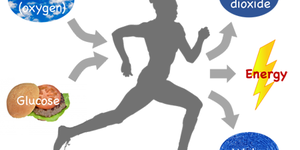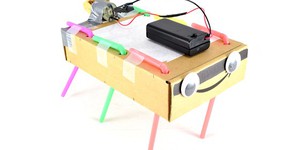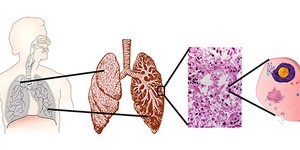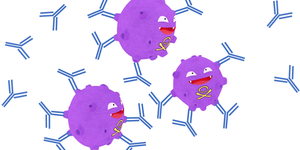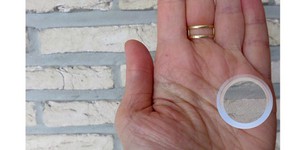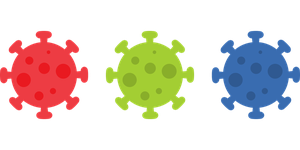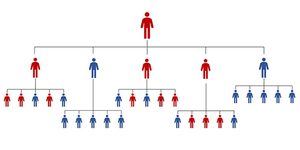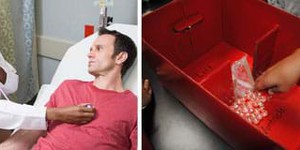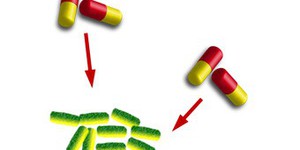Sixth Grade, Human Biology & Health Lesson Plans (12 results)
Isn't the human body incredible? From the complex systems that make it work to the numerous ways we're able to cure illnesses, there are so many fascinating subjects to study when it comes to human biology and health. Are you interested in subjects like how the body works, how best to keep it working, and how to cure everything from a common cough to cancer?
|
Select a resource
Sort by
|
Lesson Plan
Grade: 6th-8th
6 reviews
In this fun lesson plan, students will measure how the amount of carbon dioxide in their exhaled breath changes with exercise levels. Carbon dioxide is a product of cellular respiration, so the lesson highlights how breathing is connected to cellular respiration and energy production in our body. Students will make the measurements using a simple colorimetric reaction that can easily be assessed visually.
Read more
NGSS Performance Expectations:
Featured
Lesson Plan
Grade: 6th-8th
7 reviews
Junkbots are easy-to-build robots that you can make using a simple circuit and some recyclable materials. In this lesson, your students will learn about engineering design as they compete to build the fastest robot. No previous robotics experience is required!
Read more
NGSS Performance Expectations:
Lesson Plan
Grade: 6th-8th
3 reviews
The human body is complex! In this lesson, it is broken down into smaller, manageable parts. Students will build a lung model and discover how different parts of the respiratory system work together to make breathing possible. Next, they will discuss how this system works together with other systems in the body so oxygen can reach every cell of the body. While students perform these explorations, they will realize that multicellular organisms consist of systems, which are a collection of organs…
Read more
NGSS Performance Expectations:
New
Lesson Plan
Grade: 6th-12th
Create a two-part system for filtering greywater. Teams will focus on communication and systems engineering as they build separate components to filter solid and liquid waste and then combine them into one device.
Learning Objectives
Students will:
Consider the potential effects of drought and how greywater could be part of the solution.
Design a system for filtering out solid waste or liquid waste.
Consider effective communication strategies with their team.
Collaborate on their design…
Read more
Lesson Plan
Grade: 6th-8th
4 reviews
What happens when you get food poisoning or the flu? How does our body fight an infection when we get sick? In this lesson, students will build a model of our immune system to find out how our body responds to invading bacteria or viruses that cause diseases and to investigate the role of memory cells.
Read more
NGSS Performance Expectations:
Lesson Plan
Grade: 6th-8th
4 reviews
How is it possible that our eyes can see things that are not really there? In this fun lesson plan, your students will explore how our vision works with the help of two short experiments that involve some fascinating optical illusions. Let your students discuss why they see a hole in their hand, or why they see colors that were never there, and let them construct their own explanations.
Read more
NGSS Performance Expectations:
Lesson Plan
Grade: 6th-8th
4 reviews
Your students might know that they can burn calories, but do they know what a calorie really is? In this fun lesson plan, your students will measure the energy content of food by literally burning it using a device called a calorimeter that they will design and build themselves. This will get your students thinking about the chemistry of energy transfer as well as good nutrition, and gives a whole new meaning to the phrase "burning calories!"
Read more
NGSS Performance Expectations:
Lesson Plan
Grade: 6th-12th
4 reviews
We hear about COVID-19 variants all the time, but what is a virus variant, how do they come about, and why do they matter? Students will explore these question and more in this lesson plan. They will use SimPandemic, a free online tool, to model what COVID-19 outbreaks look like when communities are exposed to different COVID-19 variants and understand how genetic mutations in a virus can lead to functional changes.
Read more
NGSS Performance Expectations:
Lesson Plan
Grade: 6th-12th
1 review
What is R naught (R₀), what factors influence it, and how does it shape the infection curves of an epidemic? Students will explore these questions and more in this lesson plan. They will then use SimPandemic, a free online tool, to model what a COVID-19 outbreak looks like in communities with different R₀ values.
Remote learning adaptation: This lesson plan can be conducted remotely. Students can work independently on the Explore section of the lesson plan using the Student…
Read more
NGSS Performance Expectations:
Lesson Plan
Grade: 6th-12th
What is herd immunity, how is it achieved, and what impact does it have on outbreaks? Students will explore these questions and more in this lesson plan. They will then use SimPandemic, a free online tool, to model different levels of viral immunity in communities to understand how a population can reach the herd immunity threshold and the impacts that has on individuals and populations during a COVID-19 outbreak.
Remote learning adaptation: This lesson plan can be conducted remotely. …
Read more
NGSS Performance Expectations:
Lesson Plan
Grade: 6th-8th
Students use their knowledge about how healthy heart valves function to design, construct and implant prototype replacement mitral valves for hypothetical patients' hearts. Building on what they learned in the associated lesson about artificial heart valves, combined with the testing and scoring of their prototype heart valve designs in this activity, students discover the pros and cons of different types of artificial heart valves based on materials, surgery…
Read more
NGSS Performance Expectations:
Lesson Plan
Grade: 6th-8th
1 review
If your doctor prescribes antibiotics, why do you have to take them for several days and not just once? Why do you need to finish taking them even if you feel better? If you do not follow the doctor's orders, you might contribute to the creation of antibiotic-resistant "superbugs"! In this lesson, your students will roll dice to model how bacteria respond to treatment by antibiotics, and find out what happens if treatment is stopped too early.
Read more
NGSS Performance Expectations:
|
Explore Our Science Videos
Build a Mobile Sculpture – STEM activity
Make a Balloon Car
Build A Pizza Box Solar Oven


